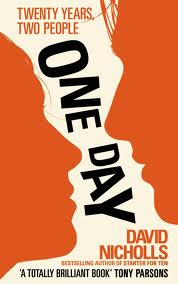4 Easy Steps to Write a Script…and a few great movie recommendations for inspiration!
If you want to be a filmmaker, a screenwriter, or just need a creative inspiration, read on:
Step #1: Make Popcorn! I’ve created “The Great Movie List”, which I’ll pull from and share some of my favorites due to various reasons. You won’t see many “tent pole pictures” or the blockbusters from Hollywood because you’ve probably already saw them and you may have already watched some of my suggestions. However, you might want to go back and watch again with a new intent. The ability to write flawless dialogue to move the story forward and create a ‘make-believe’ character likeable or not, is a great talent and who better to learn from than the masters of the “talking pictures”, the scriptwriters like these listed below.
Note: Several of these films started as books…so remains my constant recommendation to all aspiring authors and scriptwriters to “read a lot!” still stands—but read the great books—please.
Persepolis This black-and-white, animated Iranian film was adapted from a graphic novel and tells the history of this turbulent time from a young girl’s perspective.
Miss Pettigrew Lives for a Day This is an example of brilliant writing because it all takes place in one very, action-packed day and is also a book, which should be read first. Let your mind create its own ‘picture show’ guided by the author’s words—before Hollywood does it for you. It’s good as a writer to do this often.
Sidebar: Also, you might want to try writing with a ‘time lock’ as in a limited amount of time to tell the story; thirty days, one day, or ten-minutes if you’re writing for the stage and that’s only ten pages. You could also throw another challenge to your writing self and limited the number of locations, rooms, or scenes. Both of these writing exercises make you focus on developing the characters’ personalities and their stories with less time, energy, and words spent on their world, the passage of time, and even the weather. If your characters are indoors, weather usually doesn’t matter. If they’re stuck in a car in a blizzard, it is all that matters.
FYI: If you like these types of story structures and want to witness the longer version read and watch One Day as suggested in an earlier blog or this trilogy noted below—but in sequential order:
Before Midnight This is the third film starring and continuing the love story between Ethan Hawke and Julie Delpy, but watch its sequels first: Before Sunrise and then Before Sunset to understand this one. In my opinion, the first movie was the best because it mastered the art of dialogue. (Spoiler alert: He’s an author.)
Waking Ned Devine Due to the actors’ heavy Irish accent, I would advise watch this film with the English subtitles ‘on’ even though they’re speaking English (kind of). I made my English comp class watch it when I taught at the local college in Colorado to learn how to tell a good story and see how the same things are called by different names over in the Northern Isles.
Kinky Boots The Queen’s English is beautifully spoken, but this comedy is not your average family movie due to its premise of transvestites trying to find knee-high boots in their (large) sizes. Their quest does save the town and its families’ means of livelihood despite their initial resistance to such clientele.
New in Town Yes, up there in Minnesota, they do speak their own version of English, which makes this movie a good study with the English subtitles ‘on’ if you want to “hear” and “see” how to write with a believable dialect.
Step #2: Read! If you want to be a screenwriter or even a great novelist, read great scripts. Your local public library or a university should have either bound scripts or books with shooting scripts and the director’s commentary. Read as many as you can—they’re only about 100 pages these days due to the shrinking attention span of most Americans, but at some point, you’ll need to start writing. Or go back to school or be self-taught and read more books on how to write screenplays…whatever works for your writing style, life, and financial situation.
Step #3: Write & Make [Mini] Movies! Observe life and live life as an author and as a filmmaker—even if you aren’t either yet. Eavesdrop, study, research, interview, take photos, shoot mini films, talk to strangers, go to new places, try new things on, try new items off the menu, and listen: to others, nature, and yourself. Use all of your senses to capture the essence of your story in words and moving pictures—whether you making a new world inside a reader’s head or on the big screen.
(Are you writing or filming yet? That’s how a book (and a film) gets made.)
Step #4: Let’s talk! I’ve written seven screenplays, the latest one was a collaborative effort with funny woman, Lyn Wheaton. Together, we laughed and wrote our way through Wedding Belles with every, politically-incorrect reference possible, but also nudged at pointed truths on the current situation of many societal issues. Our efforts were recognized at the 2013 Scriptapalooza. Now to sell the 107-pages…so if you know anyone in Hollywood, I would greatly appreciate the introduction, but I will share with you what I’ve learned to date to help you get started: [email protected]
Thanks for reading!


